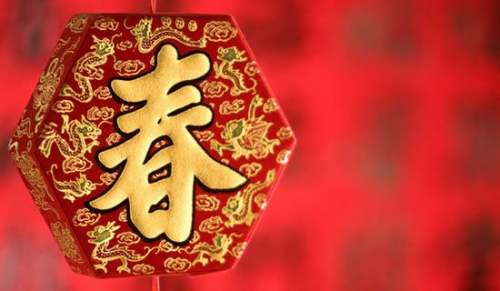关于春节的起源英语版
春节好,春节棒,春节是个皆大欢喜的日子。以下是小编整理的关于春节的起源英语版,欢迎阅读。

关于春节的起源英语版
Spring Festival is the most distinctive traditional festival in China. It marks the end of the old year of the lunar calendar.
The New Year has begun. People will say goodbye to the cold and monotonous winter and welcome the spring.
The original name of the Spring Festival was "New Year's day", and in the five candles of the five candles, sui dai qing said, "the first month is the month of the month, the first day is the first day, and the cloud is heading towards the moon. The first day of the spring, the first day of the first lunar month, is called the "three yuan". Because this day is still the year of the old, the moon, the day, so called "three dynasties"; And because it was the first day, so called "yushuo". Song wu explained in "dream liang", "the first lunar month, the New Year's day". The interpretation of the word "Dan" in the text is "from the point of view, one, the earth." The sun just rises above the horizon, meaning morning. Because it represents the first morning of the year, the first morning of the first month, so called "New Year's day" and "zhengdan".
In addition to the above titles, the Spring Festival is also known as "open year", "open year", "fang" and "hua". In many titles, the term "New Year's day" is the most common and the longest time.
Because each dynasty calendar is different, New Year's day is the season also is different. Ancient Chinese calendar is through the Yin and Yang, needs to consider the position of the sun and the moon at the same time, therefore, to determine when the New Year's day, must first determine it in one season, and then selected and close better this season as the New Year's day. Since the first year is not equal to 12 lunar calendars, the difference is about 11 days. Therefore, a leap month is needed every three years to adjust the season. The ancient Chinese astronomers had come up with a simple way to determine the relationship between the lunar sequence and the season, which is to refer to the lunar sequence in the late afternoon, which is called December. From north to east, could be divided into 12 ground bearing, bucket handle refers to position at the time of the evening, is the month, the month on its month, ugly month, Yin month respectively is equivalent to eleven, twelve, in the first month.
China is an ancient multi-ethnic country. Different ethnic groups in different historical periods have established their own New Year's day according to their own cultural traditions and customs. Both zhuanxu and xia dynasty were all in the first month of mengchun, namely the xia calendar, which was built on the first month of the first lunar month. The shang dynasty used Yin li, Yin li jian, the lunar New Year's day; Zhou li used the zhou li, which was built by zhou li, on the first day of the first lunar month. The qin dynasty used the qin dynasty, the qin dynasty jian hai, the first day of the lunar New Year's day; The early stage of the western han dynasty still use Qin Li, of the first year of emperor too early (AD 104) to switch to sima qian, los Hong created under the beginning of the calendar, again using the built him a summer, in first lunar month as New Year's day. In the future, apart from wang mang and wei mingdi, they used to build an ugly Yin calendar, and after tang wu and su zong, they changed to jian zi's calendar, and all dynasties used xia li to the last year of the qing dynasty.
The term "Spring Festival" has different historical periods. In the han dynasty, people called the first Spring Festival of the 24 solar terms "Spring Festival". During the southern and northern dynasties, people called the whole spring "Spring Festival".
After the victory of revolution, nanjing interim government in order to "shun farming" and "facilitate statistics", use a summer in folk, the government organs, factories, schools and organizations in the Gregorian calendar, to the Gregorian calendar on January 1st as New Year's day. But it is said that the first day of the Gregorian calendar is "the year of the Gregorian calendar year", and the first day of the first lunar month is called "New Year's day".
On September 27, 1949, the first plenary session of the Chinese people's political consultative conference adopted the common calendar era in the world, and designated the Gregorian calendar as New Year's day, the first day of the Gregorian calendar. Because the first day of the lunar New Year is usually around spring, the first lunar month is celebrated as "Spring Festival".
Spring Festival usually refers to the New Year's eve and the first month of the first month. But in the folk, the traditional Chinese Spring Festival means the festival from the eighth day of the twelfth lunar month of the twelfth lunar month, or the twelfth lunar month of the twelfth lunar month, until the fifteenth day of the first lunar month, which culminates with the New Year's eve and the first month of the first month.
During the traditional festival of Spring Festival, the han nationality and most ethnic minorities in China have various activities to celebrate. All these activities are to offer sacrifices to the Buddha, ancestor worship, to remove old cloth, to welcome blessings, to pray for a good year for the main content. The activity is rich and colorful with strong national characteristics.
关于春节的起源中文版
春节是中国最富有特色的传统节日。它标志农历旧的一年结束。
新的一年已经开始。人们将告别寒冷单调的冬季,迎接生机盎然的春天。
春节原名“元旦”,隋代杜台卿在《五烛宝典》中说:“正月为端月,其一日为元日,亦云正朝,亦云元朔。”“元”的本意为“头”,后引申为“开始”,因为这一天是一年的头一天,春季的头一天,正月的头一天,所以称为“三元”;因为这一天还是岁之朝,月之朝,日之朝,所以又称“三朝”;又因为它是第一个朔日,所以又称“元朔”。宋吴自牧在《梦梁录》中解释:“正月朔日,谓之元旦”。《说文解字》中对“旦”字的解释为“从日见一上,一,地也。”表示太阳刚刚从地平线上升起,就是早晨的意思。因为它分别表示一年的第一个早晨,正月的第一个早晨,所以称“元旦”和“正旦”。
除上述称谓外,春节还称“开年”、“开岁”、“芳岁”、“华岁”等,在诸多称谓中以称“元旦”最普遍,时间最长久。
因各朝代历法不同,元旦所在的季节也不同。中国古代的历法是阴阳合历,需同时考虑到太阳和月亮的位置,故确定元旦时,需首先确定它在某个季节,然后再选定与这个季节相近的朔月作为元旦。由于一岁与12个阴历并行不相等,相差约11天,故每隔3年需设置一个闰月来调整季节。中国上古的天文学家曾想出一个简便的方法来判断月序与季节的关系,这就是以傍晚时斗柄的指向定月序,称之为十二月建。从北方起向东转,将地面划分为12个方位,傍晚时斗柄所指的方位,就是该月的月建,其子月、丑月、寅月分别相当于十一、十二、正月。
中国是个古老的多民族国家。不同的历史时期的不同的民族都曾经根据自己的文化传统和风俗习惯确定过自己的元旦,即改为“正朔”,改正月初一的时间。颛顼帝和夏代都以孟春正月为元,即使用建寅的夏历,以农历正月初一为元旦;商代使用殷历,殷历建丑,以农历十二月初一为元旦;周代使用周历,周历建成子,以农历十一月初一为元旦;秦代使用秦历,秦历建亥,以农历初一为元旦;西汉前期仍然使用秦历,汉武帝太初元年(公元104年)改用司马迁、洛下闳创制的太初历,又重新使用建寅的夏历,以农历正月初一为元旦。以后除王莽和魏明帝一度改用建丑的`殷历,唐武后和肃宗时改用建子的周历外,各朝代均使用夏历至清朝末年。
“春节”这一词,在不同的历史时期,还有不同的特指。汉朝时,人们把二十四节气的第一个立春称“春节”。南北朝时,人们把整个春季叫“春节”。
辛亥革命胜利后,南京临时政府为了“顺农时”和“便于统计”,规定在民间使用夏历,在政府机关、厂矿、学校和团体中实行公历,以公历的元月一日为元旦。但一般人称公历元月一日为“阳历年”,仍把农历正月一日初一称“元旦”。
1949年9月27日,中国人民政治协商会议第一届全体会议通过使用世界上通用的公历纪元,把公历即阳历的元月一日定为元旦,为新年;因为农历正月初一通常都在立春前后,因而把农历正月初一定为“春节”。
春节一般指除夕和正月初一。但在民间,传统意义上的春节是指从腊月初八的腊祭或腊月二十三的祭灶,一直到正月十五,其中以除夕和正月初一为高潮。
在春节这一传统节日期间,我国的汉族和大多数少数民族都有要举行各种活动以示庆祝。这些活动均以祭祀神佛、祭奠祖先、除旧布新、迎禧接福、祈求丰年为主要内容。活动丰富多彩,带有浓郁的民族特色。
【关于春节的起源英语版】相关文章:
春节手抄报英语版12-02
关于街舞的起源09-30
关于蓟姓的起源07-17
关于英语版的求职信08-24
关于责任的名言警句英语版06-27
关于咖啡的起源与发展10-08
手抄报资料:春节的起源及由来08-08
元旦的习俗英语版09-27
英语版的名言警句06-26
英语版的励志名言01-12